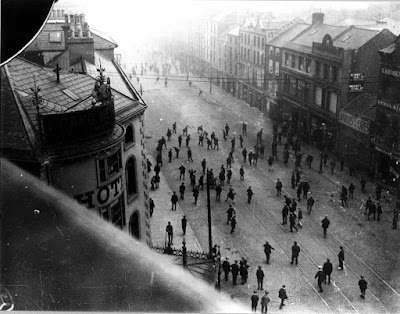
When the Partition of Ireland was first proposed in 1914 James Connolly said that such a scheme would mean “a carnival of reaction both North and South”. In the summer of 1920, as the British government unleashed the Black and Tans, and as it pushed forward legislation to partition the country, the carnival of reaction was seen in its full horror in the Six North-Eastern Counties that were to form the new state of ‘Northern Ireland’.
This reaction was both sectarian and political. Catholics were targeted because they were Catholics as Unionist political leaders and Protestant fundamentalists identified the Church of Rome as the threat to their way of life. Catholics were predominantly nationalist or republican and so they were seen as a political threat to the Union with Britain. In the Home Rule crisis of 1912-1914 Catholics had been widely targeted for sectarian attacks.
Sinn Féin had received a huge electoral mandate across Ireland in the 1918 General Election and in local elections in February and June 1920. Nationalists and republicans won control of Derry City Council and the County Councils of Fermanagh and Tyrone. The elections were held for the first time under the system of proportional representation, the results exposing the fact that even the Six Counties of ‘Northern Ireland’ were far from the ‘Loyal Ulster’ of Unionist propaganda. (They would see to this later when the new Unionist government abolished PR). The political nature of the reaction was also underlined by the fact that Protestant trade unionists and socialists were targeted as well as Catholics.
In Derry in June there were gun attacks on nationalists by the loyalist Ulster Volunteer Force, as well as serious rioting, with 20 people killed. The storm intensified with the return to Ireland of Unionist leader Edward Carson. (more...)
Related:

No comments:
Post a Comment